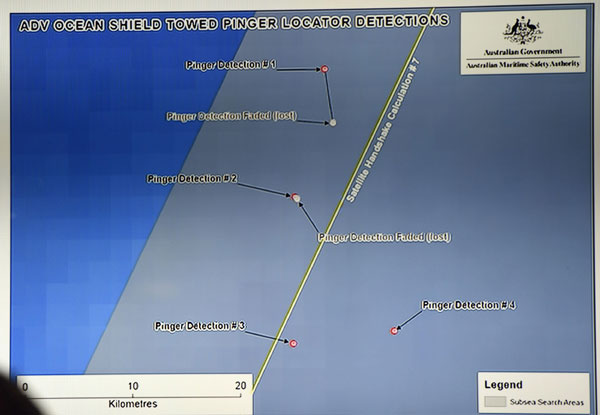One year later: Benefits from the search for MH370
(Agencies) Updated: 2015-03-06 14:28A window into history
 |
|
Graphics on a TV screen shows pinger locator detections during the search for the missing Malaysia Airlines flight MH370, during a media briefing at Dumas House in Perth April 9, 2014.[Photo/Agencies] |
Robin Beaman, a marine geologist at Australia's James Cook University, said the underwater maps will help show scientists how Earth's crust stretched and pulled apart millions of years ago, a process that is continuing today and is slowly pushing Australia away from Antarctica.
"It's fitting the pieces of the puzzle back together. And it's not just an academic exercise," Beaman said. "The great gas resources for Australia are in the west, and if you fit that jigsaw back, you get more of a picture of how those gas resources were created."
Dave Gallo, the director of special projects at Woods Hole Oceanographic Institution in Massachusetts, said less than 8 percent of the underwater world has been explored.
"It's more daunting than looking on Mars because there's no light," he said. "So we're in a completely unknown world in mountains that are the most rugged on earth. There's no map, so it's all basic, pure exploration with a mission that not only are we exploring, but we're also looking for an aircraft."
Minchin said that everybody involved in the search continues to hope the plane will be found.
"If not, there is a silver lining," he said. "The data will be useful to science for many years to come."






